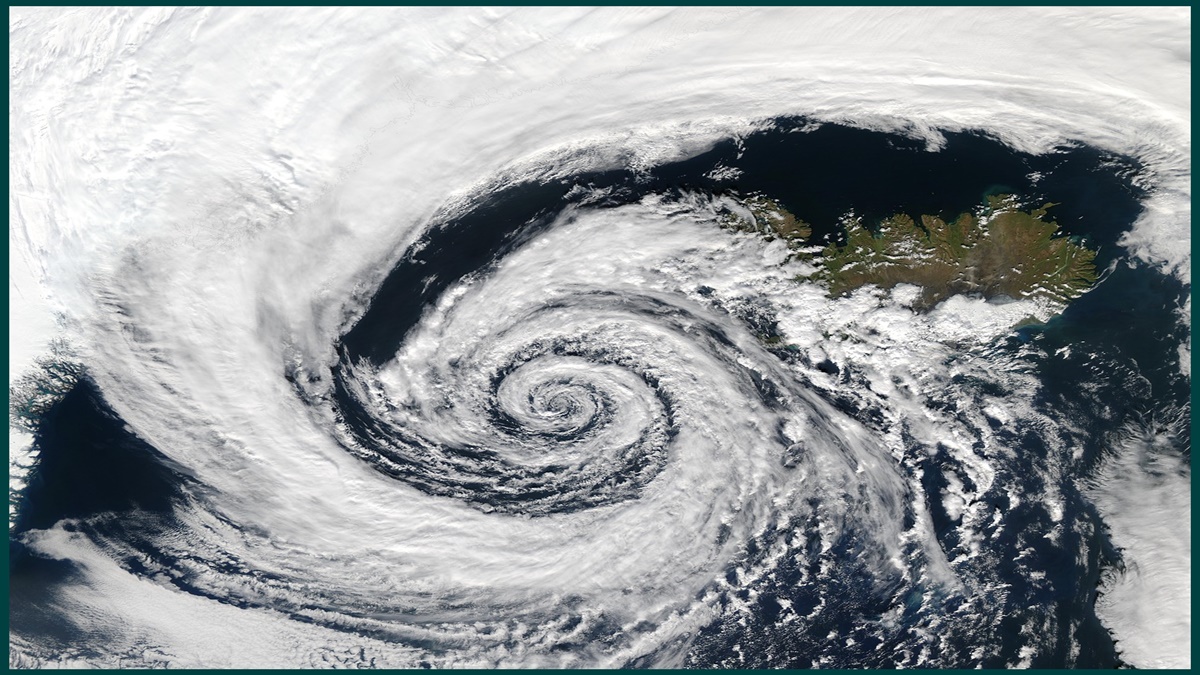Cyclone Quiz Questions and Answers
What is a cyclone?
Answer: A cyclone is a large-scale weather system characterized by strong rotating winds and low atmospheric pressure.
Which direction do cyclones rotate in the Northern Hemisphere?
Answer: Cyclones rotate counterclockwise in the Northern Hemisphere.
What is the term used for a cyclone in the North Atlantic Ocean and Northeast Pacific Ocean?
Answer: Hurricane.
What is the term used for a cyclone in the South Pacific and Indian Ocean?
Answer: Cyclone.
What is the term used for a cyclone in the Northwest Pacific Ocean?
Answer: Typhoon.
Which season is known for the occurrence of cyclones in the Indian Ocean?
Answer: The cyclone season in the Indian Ocean typically occurs from April to December.
What is the center of a cyclone called?
Answer: The center of a cyclone is called the eye.
What is the area surrounding the eye of a cyclone called?
Answer: The area surrounding the eye of a cyclone is called the eyewall.
What is the Saffir-Simpson scale used for?
Answer: The Saffir-Simpson scale is used to categorize hurricanes based on their intensity and potential damage.
Which country is most commonly affected by cyclones in the Bay of Bengal?
Answer: Bangladesh.
What is storm surge?
Answer: Storm surge is the abnormal rise of seawater associated with a cyclone, which can cause coastal flooding.
Which region is known as the “Cyclone Alley” of the United States?
Answer: The Gulf Coast of the United States, particularly the states of Texas and Louisiana, is known as “Cyclone Alley.”
What is the term used for a weak tropical cyclone with maximum sustained winds of less than 39 mph (63 km/h)?
Answer: Tropical depression.
What is the term used for a strong tropical cyclone with maximum sustained winds between 74 and 95 mph (119 and 153 km/h)?
Answer: Tropical storm.
What is the term used for a very strong tropical cyclone with maximum sustained winds of 96 mph (154 km/h) or higher?
Answer: Hurricane, cyclone, or typhoon, depending on the region.
Which oceanic region experiences the highest frequency of tropical cyclones?
Answer: The Western North Pacific Ocean experiences the highest frequency of tropical cyclones.
What is the main cause of the formation of cyclones?
Answer: Cyclones are primarily caused by the interaction of warm ocean waters, atmospheric instability, and low-pressure systems.
What is the difference between a tropical cyclone and an extratropical cyclone?
Answer: Tropical cyclones derive their energy from warm ocean waters, while extratropical cyclones derive their energy from temperature contrasts in the atmosphere.
Which part of a cyclone experiences the strongest winds?
Answer: The eyewall, surrounding the eye of the cyclone, experiences the strongest winds.
What is the term used for the process by which a tropical cyclone weakens and dissipates over land?
Answer: Landfall.
What is the name given to the global organization responsible for naming tropical cyclones?
Answer: The World Meteorological Organization (WMO).
What is the term used for the rotating band of clouds and thunderstorms that surrounds the center of a cyclone?
Answer: The spiral rainbands.
Which region of the United States is commonly affected by hurricanes along the Atlantic coast?
Answer: The southeastern coast of the United States, including states such as Florida, Georgia, and the Carolinas.
What is the term used for the outermost region of a cyclone where winds are relatively weaker and rain is less intense?
Answer: The outer rainbands or outer periphery.
Which country experienced the deadliest cyclone on record, known as the “Great Bhola Cyclone,” in 1970?
Answer: Bangladesh (formerly East Pakistan).
What is the term used for the process of predicting and tracking cyclones?
Answer: Cyclone forecasting or cyclone tracking.
Which region is prone to the formation of cyclones known as “Medicanes” (Mediterranean hurricanes)?
Answer: The Mediterranean Sea.
What is the term used for the weakening or dissipation of a tropical cyclone over cooler ocean waters?
Answer: Tropical cyclone decay.
Which region experiences the most intense tropical cyclones on average?
Answer: The Northwest Pacific Ocean.
What is the term used for the cone-shaped area of turbulent winds extending from the surface to the upper levels of the cyclone?
Answer: The vortex.
Which country experienced the devastating Cyclone Nargis in 2008, causing widespread destruction and loss of life?
Answer: Myanmar (Burma).
What is the term used for the sudden intensification of a tropical cyclone, characterized by a rapid increase in wind speeds?
Answer: Rapid intensification.
Which month marks the beginning of the Atlantic hurricane season?
Answer: June.
What is the term used for the process of rotating winds in a cyclone descending from higher altitudes toward the surface?
Answer: Downdraft.
Which region is commonly affected by cyclones known as “Nor’easters” along the northeastern coast of the United States?
Answer: The East Coast of the United States.
What is the term used for a mature tropical cyclone with sustained winds of 74 mph (119 km/h) or higher?
Answer: A hurricane, cyclone, or typhoon, depending on the region.
Which meteorological instrument is used to measure the pressure within a cyclone?
Answer: Barometer.
What is the term used for the area surrounding the eyewall of a cyclone where winds are intense and rainfall is heavy?
Answer: The inner rainbands or inner periphery.
Which region is known for the occurrence of tropical cyclones known as “Willem van Oranje”?
Answer: The South Indian Ocean.
What is the term used for the process of categorizing cyclones based on their intensity, using scales such as the Saffir-Simpson scale?
Answer: Cyclone classification.
Cyclone Quiz Questions and Answers
Also watch and learn quiz on Space
